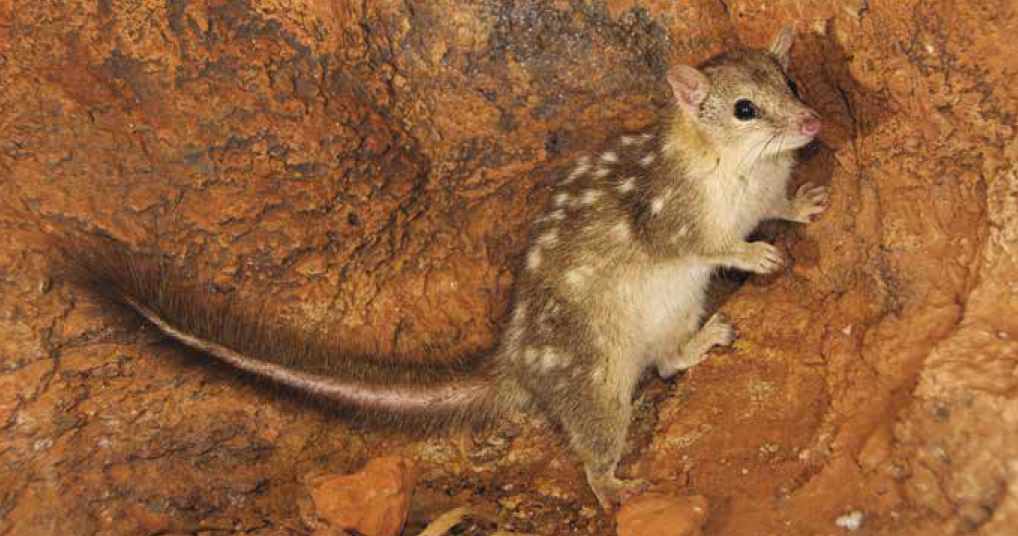The Pilbara is the main stronghold of the endangered northern quoll, with many populations in other regions collapsed or likely to collapse in the near future due to poisoning by cane toads. There is a tantalising prospect of maintaining the Pilbara stronghold by closing off water points south of the Kimberley to prevent the spread of cane toads, or at least considerably delay them.
The 4 populations of northern quolls – in the Pilbara, Kimberley, Top End and Queensland – are each genetically distinct lineages. The Great Sandy Desert has been a long-standing barrier to gene flow between quolls in the Pilbara and Kimberley.
Quolls are the largest native predatory mammal in the Pilbara, but smaller than feral cats and other introduced predators. They live mainly in complex rocky habitats that provide dens and protection from predators and fire, and they eat a wide range of small animals and vegetation. Their lifespan is short. Most males die within a year, their immune system collapsing due to escalating stress hormones as they compete frenetically for females during a short breeding season. This ‘suicidal reproduction’ – common also in antechinuses and phascogales – makes evolutionary sense ‘because females profit from sperm competition’. Female quolls in the Pilbara bear litters of up to 8 young with up to 8 different fathers – a higher degree of female promiscuity and multiple paternity than described for any other marsupial. Females can survive for up to 3 years.
Northern quolls were once abundant across northern Australia from Brisbane to the Pilbara. Now they are restricted to a few fragmented populations, mainly in rocky areas. The impact of cane toads has been ‘catastrophic’, including the near-extinction of quolls from western Arnhem Land. In the Pilbara the main threats are thought to be predation by feral cats, foxes and dogs, altered fire regimes and over-grazing by introduced herbivores.
Cane toads are expected to reach the Pilbara within 2 decades or so. To get there, they must traverse a narrow, 400-km-long corridor between the Great Sandy Desert and the Indian Ocean, where there are few natural water sources. It may be possible to block the toads there by preventing their access to artificial water sources – for example, by replacing dams with troughs and erecting toad-proof fences around water sources. The Pilbara quolls will be in great peril if toads arrive, although there may be potential to train some in advance to avoid toads.
